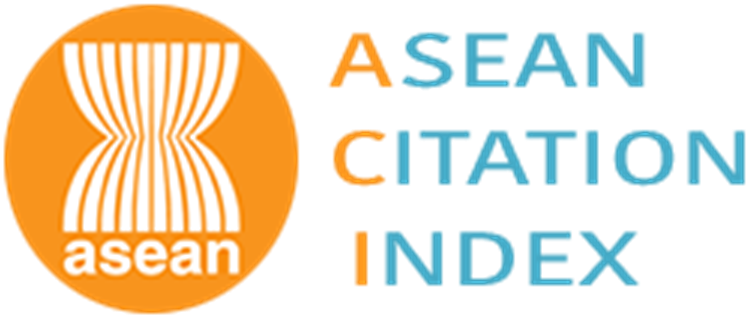แนวทางการออกแบบสิ่งอำนวยความสะดวกเพื่อคนทั้งมวล ท่าเรือด่วนเจ้าพระยา สถานีท่าน้ำนนทบุรี
Universal Design Guidelines for Facilities at Nonthaburi Pier, Nonthaburi Province
Abstract
งานวิจัยเรื่อง แนวทางการออกแบบสิ่งอำนวยความสะดวกเพื่อคนทั้งมวล ท่าเรือด่วนเจ้าพระยา สถานีท่าน้ำนนทบุรี มีวัตถุประสงค์ 1) เพื่อศึกษาลักษณะทางกายภาพและกิจกรรมการใช้งานในปัจจุบัน 2) เพื่อศึกษาความต้องการของผู้ใช้บริการให้เป็นไปตามหลักการออกแบบที่เหมาะสมต่อคนทั้งมวล (Universal Design) 3) เพื่อเป็นแนวทางออกแบบปรับปรุงพื้นที่ท่าเรือด่วนที่ตอบสนองกิจกรรมการใช้งานสำหรับคนทั้งมวล วิจัยนี้เป็นวิจัยเชิงคุณภาพ โดยใช้ วิธีการสัมภาษณเชิงลึกกับผู้เชี่ยวชาญ 3 ท่าน ได้แก่ 1) คุณชัยพร ภูผารัตน์ 2) คุณณัฐวดี เตมียกุล และ 3) คุณศิริญญา ปัญญะภาโส ซึ่งเป็นผู้เชี่ยวชาญด้านสิ่งอำนวยความสะดวกสำหรับผู้พิการและผู้สูงอายุ และการบูรณาการการเรียนการสอน (Research - Based Learning) ในรายวิชาออกแบบภูมิสถาปัตยกรรม 6 จากการสัมภาษณ์สามารถ นำข้อมูลมาวิเคราะห์หาความต้องการในการออกแบบพื้นที่ท่าเรือด่วนเจ้าพระยา ผลการวิจัย เสนอแนวทางการออกแบบสิ่งอำนวยความสะดวกเพื่อคนทั้งมวล ที่ควรได้รับการพัฒนาออกเป็น 5 บริเวณพื้นที่ ได้แก่ 1) บริเวณพื้นที่ทางเท้า จากสถานีขนส่งรถประจำทางไปถึงสถานีเรือด่วนเจ้าพระยา เน้นการจัดทางสัญจรเท้า และสัญญาณเสียงข้ามทางม้าลาย 2) บริเวณพื้นที่จอดรถสำหรับผู้พิการที่ใกล้กับอาคารสถานีเรือด่วนเจ้าพระยาให้มากที่สุด 3) ทางเข้าอาคาร เน้นให้ผู้พิการทุกประเภทสามารถเข้าถึงตัวอาคารได้อย่างสะดวก เช่น พื้นผิวต่างสัมผัส ป้ายบอกทาง และราวจับอักษรเบรลล์ 4) ภายในอาคารสถานีเรือด่วนเจ้าพระยา แบ่งออกเป็น 4.1) จุดบริการข้อมูลข่าวสาร จุดจำหน่ายตั๋ว เน้นออกแบบเคาน์เตอร์สำหรับผู้พิการทางการเคลื่อนไหว โมเดลอักษรเบรลล์สำหรับผู้พิการทางการมองเห็น 4.2) จุดให้บริการสาธารณะ เน้นการจัดสิ่งอำนวยความสะดวกและการบริการตามความจำเป็น เช่น ตู้กดเงินด่วน จุดบริการน้ำดื่ม ห้องน้ำ เจ้าหน้าที่ให้ความช่วยเหลือ เป็นต้น 4.3) พื้นที่พักคอยและพื้นที่จอดวีลแชร์ผู้พิการ 5) ทางลาดลงสู่โป๊ะเรือ ดังนั้นแนวทางการออกแบบทั้ง 5 บริเวณพื้นที่นี้ เพื่อสามารถเปิดโอกาสให้ผู้พิการมีสิทธิเข้าถึงได้ทั่วทุกพื้นที่ได้อย่างสะดวกและปลอดภัย ข้อเสนอแนะด้านนโยบายและข้อบังคับใช้กฎหมายที่เกี่ยวข้อง ควรมีการจัดทำแผนยุทธศาสตร์ของประเทศเพื่อขับเคลื่อนการพัฒนาสิ่งอำนวยความสะดวกและให้บริการความช่วยเหลือในทุกพื้นที่สาธารณะและอาคารสาธารณะควรมีสิ่งอำนวยความสะดวกเพื่อรองรับผู้พิการและผู้สูงอายุ
The objectives of the study were to: 1) study the physical characteristics and current usage activities, 2) study the needs of the users based on the principles of the universal design, and 3) design and create guidelines for mass transit universal design to meet the needs of all passengers. This qualitative research was conducted through an in-depth interview with the experts in facilities for elderly people and disables. The data from the interview were used to analyze for the design of Chao Phraya Express Port area. The results showed that there were 5 areas needed to be developed, i.e. 1) the pedestrian zebra crossing from the bus terminal to the Chao Phraya Express Boat Station which should be installed with a sound signaling system. 2) The parking area for disables should be close to the boat terminal building. 3) The contact braille surfaces, signposts, and handrails should be provided at the entrance of the building which is accessible to all types of disabilities. 4) The area inside the Chao Phraya Express Boat Station should be divided into 3 main points: 4.1) an information service point ticket counter for mobility disabilities and a braille model for the visually impaired, 4.2) public service points should be provided as needed including an express cash machine, drinking water service points, restrooms, and supporting staff, and 4.3) waiting area and wheelchair parking spaces should be available. And 5) easy access should be provided from the ramp area to the pontoons. The design guidelines for all five areas will ensure that people with disabilities have access to all areas with convenience and safe. The suggestions on the policy and regulations include developing a national strategic plan to provide facilities and adequate services in all public areas and public buildings to accommodate the disable and the elderly.
Keywords
[1] Office of Transport and Traffic Policy and Planning, “Project to study the development of facilities and increase the efficiency of services in the transportation sector for the disabled and the elderly,” Chulalongkorn University, Bangkok, Nov. 2015 (in Thai).
[2] Universal design guide book, 2rd ed., Department of Empowerment of Persons with Disabilities., Bangkok. 2015, pp.14–39 (in Thai).
[3] Ministry of Interior, “Ministerial regulation prescribing accessible facilities for persons with disabilities and the elderly,” Royal Thai Government Gazette, Bangkok, Thailand, vol. 122, 2005, pp. 4–19.
[4] Ministry of Interior, “Ministerial Regulation prescribing accessible facilities for persons with disabilities and the elderly,” Royal Thai Government Gazette, Bangkok, Thailand, vol. 2, 2021, p. 25.
[5] Ministry of Social Development and Human Security, “Characterize or providing equipment and facilities or services in buildings or other public services to enable people with disabilities to access and use them,” Royal Thai Government Gazette, Bangkok, Thailand, vol. 122, 2012, pp. 2–3.
[6] R. Chutapruttikorn, G. Wattanawerachai, K. Thongonnard, and S. Aimratsamee, “New master plan guideline for bangpakong home for disabilities,” Journal of Ratchasuda College, vol. 14, pp. 63–65, 2011 (in Thai).
[7] T. Bunyasakseri and C. Phaholthep, “The renovation guideline for the physical improvement in respondent to disabled,” Art and Architecture Journal Naresuan University, vol. 2, pp. 51, 2015 (in Thai).
[8] S. Jiravanichkul, S. Pongprasert, and T. Jarutach, “Universal design guidelines for Pontoon Pier: Moo-7 Pier (Kru Tew Pier), Ko Kret Island and Pak Kret Pier, Nonthaburi,” The Journal of Architectural/Planning Research and Studies, vol. 1, no. 17, pp. 173–187, 2020 (in Thai).
DOI: 10.14416/j.kmutnb.2022.10.006
ISSN: 2985-2145





